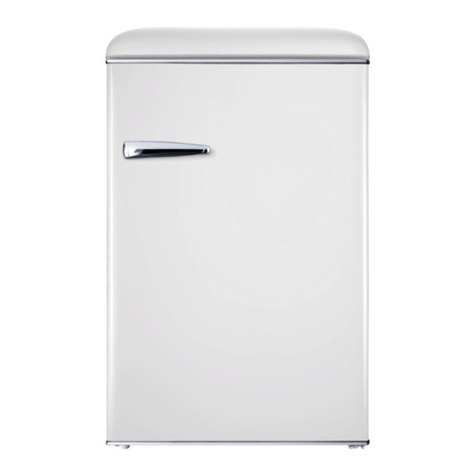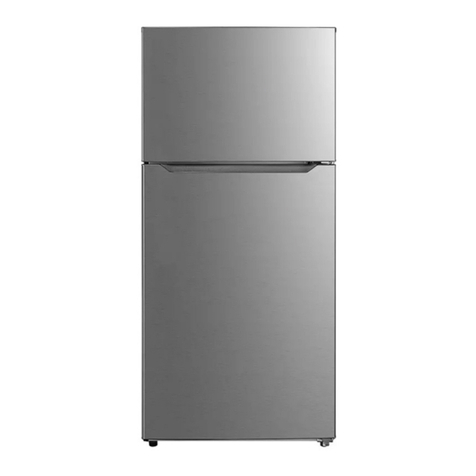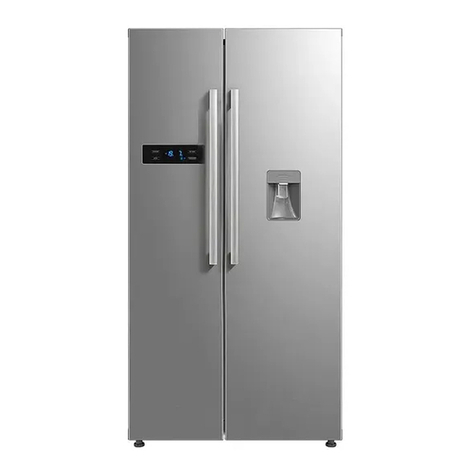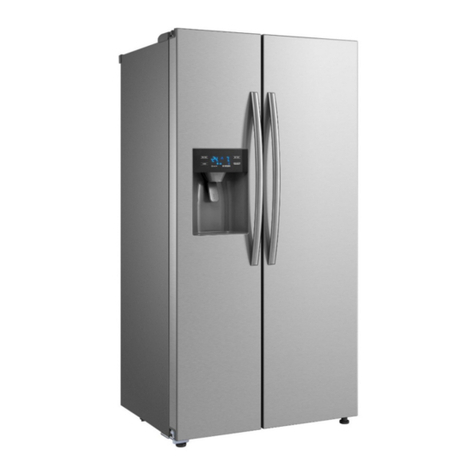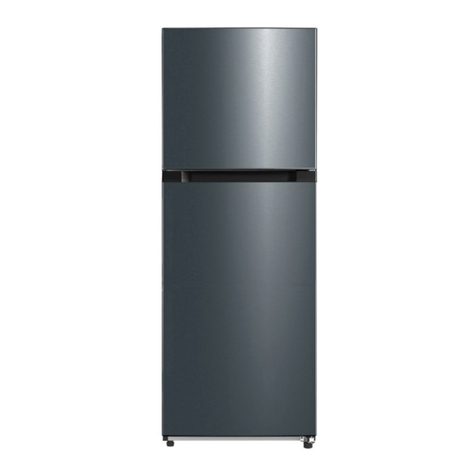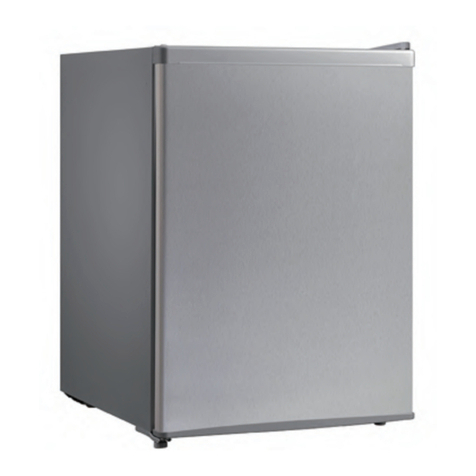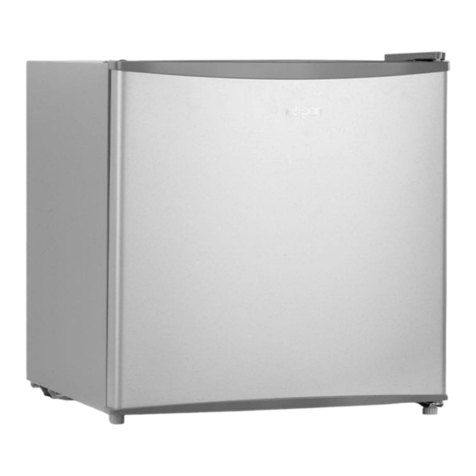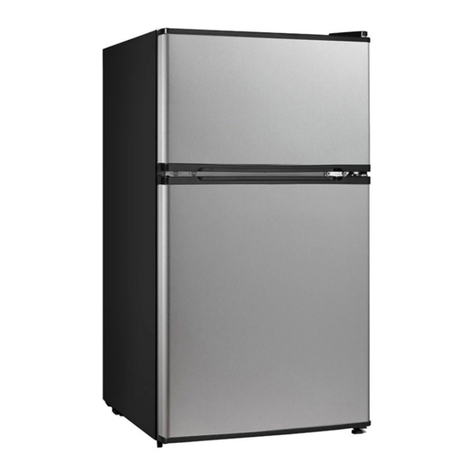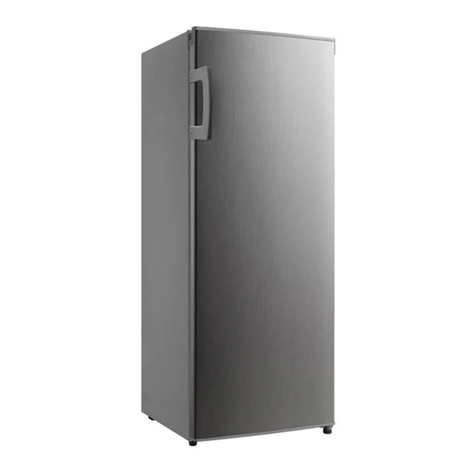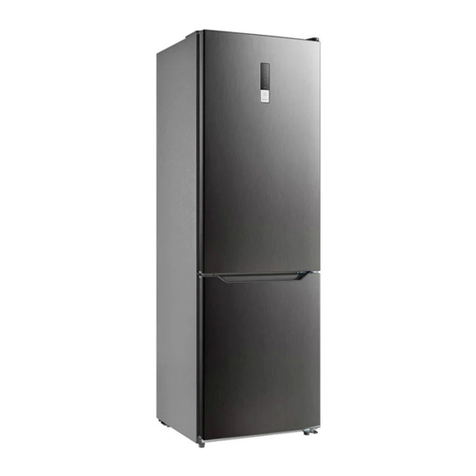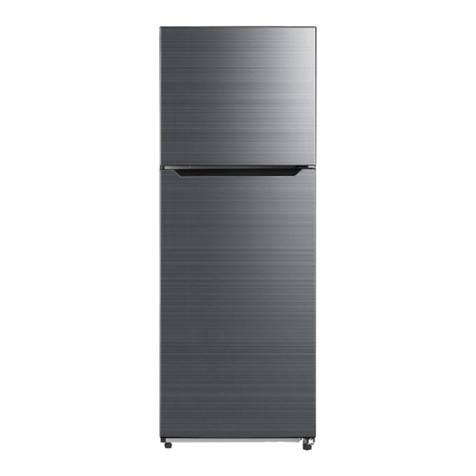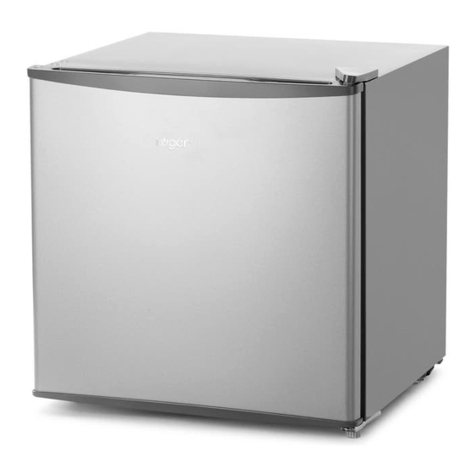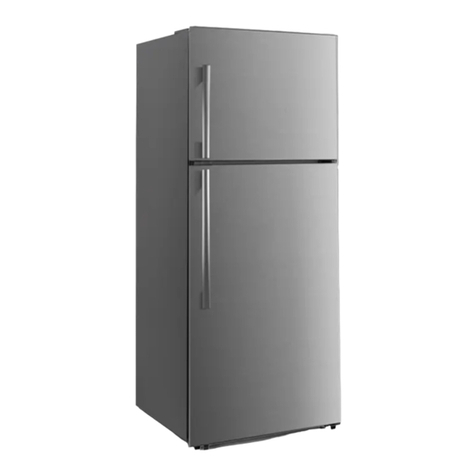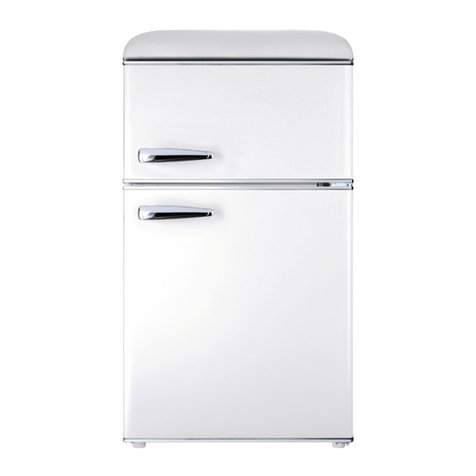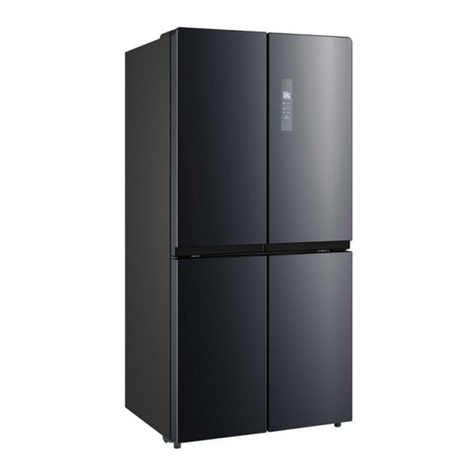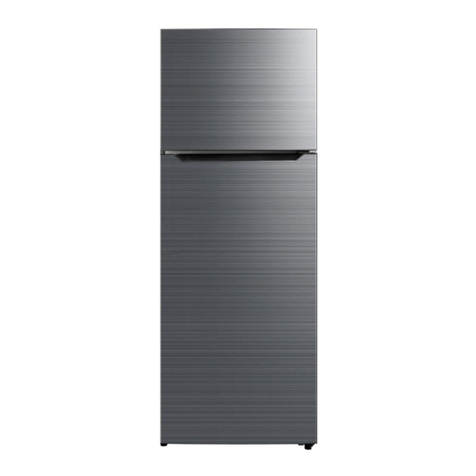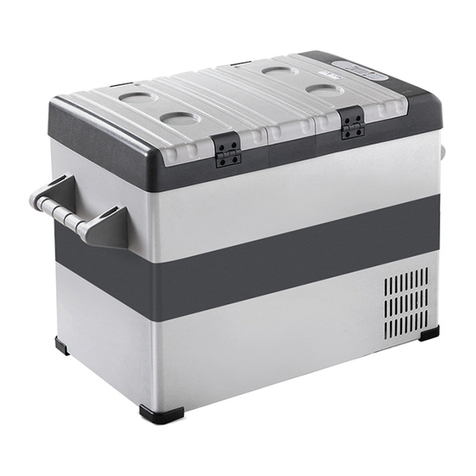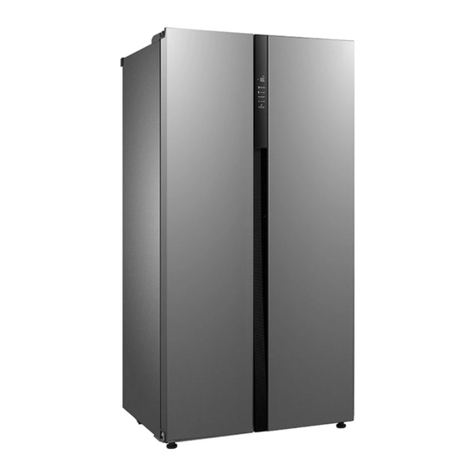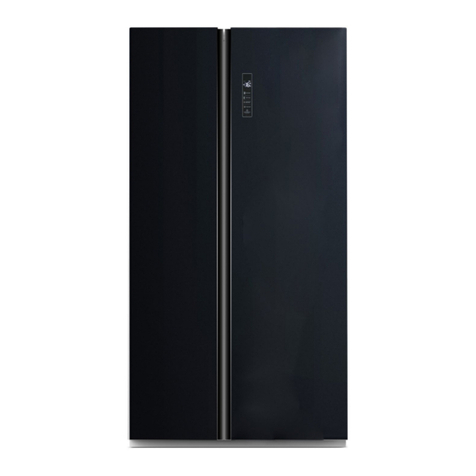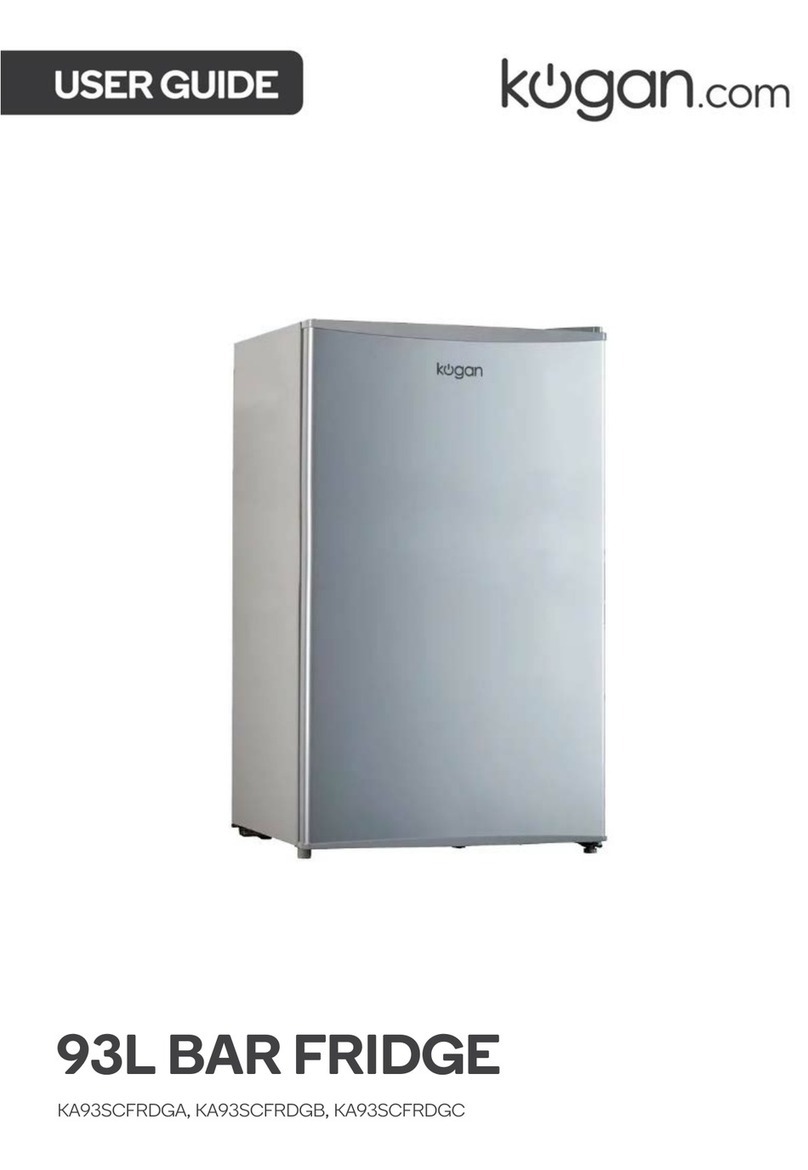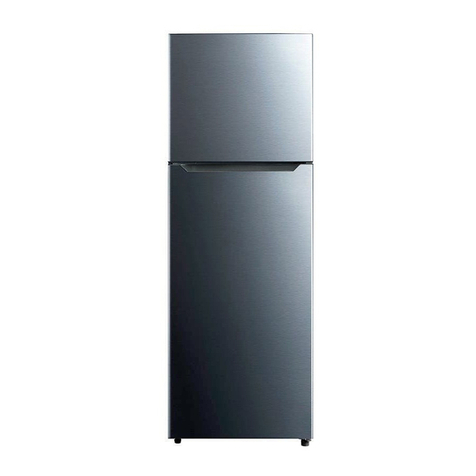
6
• WARNING: Do not use mechanical devices or other means to accelerate the defrosting
process, other than those recommended by the manufacturer.
• Usage restriction: This appliance is not intended for use by persons (including children) with
reduced physical, sensory or mental capabilities, or lack of experience and knowledge, unless
they have been given supervision or instructions concerning use of the appliance by a person
responsible for their safety.
• Children: Supervise young children to ensure they do not play with the appliance. Never allow
children to operate, play with or crawl inside the appliance.
• WARNING: Do not use electrical appliances inside the appliance, unless they are of the
type recommended by the manufacturer.
• Explosive or flammable substances: Do not store explosive substances such as aerosol cans
with a flammable propellant in this appliance. Do not store or use petrol or any other flammable
vapours and liquids in the vicinity of this or any other appliance. Do not use such substances for
cleaning the appliance. The fumes can create a fire hazard or an explosion.
• Damage: Do not use the appliance if the power cord, plug or the appliance itself is damaged. If
the cord is damaged, contact the after sales support line and have the cord replaced by qualified
personnel in order to avoid a hazard.
• WARNING: Do not damage the refrigerant circuit.
• Do not modify: Do not attempt to alter or modify this appliance in any way.
• Repair: Do not attempt to repair or replace any part of this appliance unless it is specifically
recommended in this manual. All other servicing should be referred to a qualified technician.
Contact the after sales support line for advice.
ELECTRICAL SAFETY
• Voltage: Before connecting and turning on the appliance, ensure the electrical voltage and
circuit frequency correspond to that indicated on the appliance rating label.
• Earthing: This appliance should be properly earthed for your safety. The power cord of this
appliance is equipped with a three-prong plug for use in standard wall outlets to minimise the
possibility of electrical shock. Do not modify the cord and/or plug provided with the appliance.
Improper use of the earthed plug can result in the risk of electric shock.
• Connection: This appliance requires a standard 220-240 V AC 50Hz electrical outlet. Do not
overload the electrical circuit.
• Power cord: Do not kink or damage the power cord; do not leave it exposed or dangling. Secure
it at the back of the appliance so no one steps on or places anything on the cord or against it.
Keep the cord out of reach of children. When moving the appliance, make sure not to damage
the power cord.
• Auxiliary Items: Do not use an inverter, adaptor or extension cord with this appliance. If the cord
is too short, have a qualified electrician install an outlet near the appliance. Use of an extension
cord and an inverter can negatively affect the performance of the unit.
• Protect from moisture: To protect against the risk of electric shock, do not immerse the unit,
cord or plug in water or spray it with any other liquid. Do not connect or disconnect the electric
plug when your hands are wet. Turn the power switch off before removing the plug from the
socket.
• WARNING: Disconnect! To reduce the risk of fire, electric shock or personal injury, always
unplug the appliance from the socket when not in use, when moving and before cleaning
or servicing. Never unplug the unit by pulling the power cord. Always grip the plug firmly
and pull straight out from the power point.
• Electrical work: Any electrical work required for the installation of this appliance should be
carried out by a qualified electrician.
Never use this appliance with a damaged refrigerant circuit! If the coolant circuit becomes
damaged, avoid proximity to open fires and all types of heat sources. The room in which the
appliance is located should be ventilated for a few minutes.
General Safety Warnings Continued
